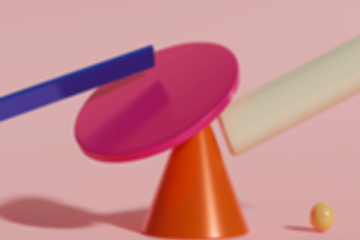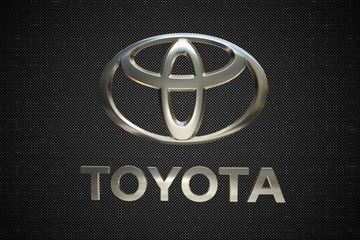We found 304 results that contain "it"
Posted on: #iteachmsu

ASSESSING LEARNING
Four-part framework
The four-part framework (investigating the issue, recognizing perspectives, communicating ideas, taking action) incorporated into this micro-credential reflects the changing role of our students in the 21st century. Students must have a substantive understanding of the complex, diverse, and interdependent world in which they live. Educators will delve into the research that supports the students becoming globally competent through inquiry. The four-part framework is described below. Additional resources are available in the “Supporting Rationale and Research” section and should be examined prior to completing this micro-credential.
Posted by:
Scarlet Ethan Edien

Posted on: #iteachmsu


Four-part framework
The four-part framework (investigating the issue, recognizing persp...
Posted by:
ASSESSING LEARNING
Monday, May 10, 2021
Posted on: #iteachmsu

ASSESSING LEARNING
Toyota Links
Description is the pattern of narrative development that aims to make vivid a place, object, character, or group. Description is one of four rhetorical modes, along with exposition, argumentation, and narration. In practice it would be difficult to write literature that drew on just one of the four basic modes
Authored by:
Wen Macdonald

Posted on: #iteachmsu


Toyota Links
Description is the pattern of narrative development that aims to ma...
Authored by:
ASSESSING LEARNING
Friday, Jul 31, 2020
Posted on: #iteachmsu

DISCIPLINARY CONTENT
The relationship between science and technology
Science, technology and innovation each represent a successively larger category of activities which are highly interdependent but distinct. Science contributes to technology in at least six ways: (1) new knowledge which serves as a direct source of ideas for new technological possibilities; (2) source of tools and techniques for more efficient engineering design and a knowledge base for evaluation of feasibility of designs; (3) research instrumentation, laboratory techniques and analytical methods used in research that eventually find their way into design or industrial practices, often through intermediate disciplines; (4) practice of research as a source for development and assimilation of new human skills and capabilities eventually useful for technology; (5) creation of a knowledge base that becomes increasingly important in the assessment of technology in terms of its wider social and environmental impacts; (6) knowledge base that enables more efficient strategies of applied research, development, and refinement of new technologies.
Posted by:
Rohit 936 shinde

Posted on: #iteachmsu


The relationship between science and technology
Science, technology and innovation each represent a successively la...
Posted by:
DISCIPLINARY CONTENT
Friday, Nov 13, 2020
Posted on: #iteachmsu
![post image]()
NAVIGATING CONTEXT
Globalization and its Impact on Education with Specific Reference to Education in South Africa
https://www.youtube.com/watch?v=L-VBVLQRmmw
As globalization of the world economy continues unabated, a parallel growth of globalization of knowledge is also taking place. This latter trend is little affected by the boundaries between developed and less developed countries and is having a particular impact on trends in education. This article looks at the impact of globalization within the context of education in South Africa. It focuses on different perspectives of globalization and identifies key factors that may have an impact on education in South Africa. Finally, it argues that in order to respond to the dangers of marginalization posed by globalization it will be crucial to form, and be part of, new alliances and networks. These will both provide opportunities for sharing knowledge and skills and also build economic strength.
As globalization of the world economy continues unabated, a parallel growth of globalization of knowledge is also taking place. This latter trend is little affected by the boundaries between developed and less developed countries and is having a particular impact on trends in education. This article looks at the impact of globalization within the context of education in South Africa. It focuses on different perspectives of globalization and identifies key factors that may have an impact on education in South Africa. Finally, it argues that in order to respond to the dangers of marginalization posed by globalization it will be crucial to form, and be part of, new alliances and networks. These will both provide opportunities for sharing knowledge and skills and also build economic strength.
Posted by:
Scarlet Ethan Edien
Posted on: #iteachmsu
![post image]()
Globalization and its Impact on Education with Specific Reference to Education in South Africa
https://www.youtube.com/watch?v=L-VBVLQRmmw
As globalization of th...
As globalization of th...
Posted by:
NAVIGATING CONTEXT
Thursday, May 9, 2019
Posted on: #iteachmsu

ASSESSING LEARNING
How Can We Successfully Land a Rover on Mars?
The classic egg drop experiment gets reinvented as a driving question for physics students to explore a real-world problem.
By Suzie Boss
July 26, 2018
When a teenager climbs atop his desk and drops an object to the floor, teacher Johnny Devine doesn’t object. Far from it—he’s as eager as the rest of the class to see what happens next.
In a split second, the student and his teammates get positive feedback for the object they have cobbled together by hand. A small parachute made of plastic and held in place with duct tape opens as planned, slowing the descent and easing the cargo to a safe landing. Students exchange quick smiles of satisfaction as they record data. Their mission isn’t accomplished yet, but today’s test run brings them one step closer to success as aspiring aerospace engineers.
To boost engagement in challenging science content, Devine has his students tackle the same problems that professional scientists and engineers wrestle with. “Right away, they know that what they are learning can be applied to an actual career,” Devine says. “Students are motivated because it’s a real task.”
From the start of Mission to Mars, students know that expert engineers from local aerospace companies will evaluate their final working models of Mars landing devices. Their models will have to reflect the students’ best thinking about how to get a payload from orbit onto the surface of the Red Planet without damaging the goods inside. While real Mars landings involve multimillion-dollar equipment, students’ launchers will carry four fragile eggs.
THE ROAD MAP
Although the project gives students considerable freedom, it unfolds through a series of carefully designed stages, each focused on specific learning goals. Having a detailed project plan “creates a roadmap,” Devine explains, “for the students to really track their progress and see how what they’re learning connects back to the guiding question: How can we successfully land a rover on Mars?”
©George Lucas Educational Foundation
Before introducing technical content, Devine wants students to visualize what space scientists actually do. By watching videos of engineers who design entry, descent, and landing systems for spacecraft, students start getting into character for the work ahead.
Devine introduces a series of hands-on activities as the project unfolds to help students put physics concepts into action. They learn about air resistance, for instance, by experimenting with parachute designs and wrestling with a real challenge: How will they slow their landers to a reasonable speed for entry into the thin Martian atmosphere?
To apply the concept of change in momentum, students design airbag systems to go on the bottom of their landers—a location aptly called the crumple zone. They experiment with bubble wrap and other materials as potential cushioners for their cargo.
As the grand finale approaches, students keep using what they learn to test, analyze, and modify their designs. “You have to repeat the equations with different trials,” one student explains. “Being able to use that math over and over again helps it stick.”
Much of the hands-on learning in this PBL classroom “might look like a traditional physics lab,” Devine acknowledges, with students learning concepts through inquiry investigations. What’s different is the teacher’s ongoing reminder “to make sure students stay in character” as systems engineers. Each lab investigation relates back to their driving question and creates more opportunities for Devine to ask probing questions and formatively assess his students’ understanding. “We do a lot of framing in and framing out after each of those lessons so students have the chance to reflect and connect it back,” the teacher explains.
EXPERT CONVERSATIONS
When it is finally time for students to launch their precious cargo off a second-story landing, engineers from local aerospace companies are standing by to assess results. How many eggs in each lander will survive the fall?
Even more important than the test data are the discussions between experts and students. One engineer, for instance, asks to see earlier versions of a team’s design and hear about the tests that led to modifications. A student named Elizabeth perks up when she hears engineers using the same technical vocabulary that she and her classmates have learned. “It was kind of a connection—this is actually a thing that goes on,” she says.
“They had really deep, meaningful conversations so that students could practice communicating their justification for their designs,” Devine says. Hearing them use academic language and apply physics concepts tells the teacher that students deeply understand the science behind their designs. “At the end of the day, that’s what I’m most concerned about,” he says.
https://youtu.be/bKc2shFqLao
By Suzie Boss
July 26, 2018
When a teenager climbs atop his desk and drops an object to the floor, teacher Johnny Devine doesn’t object. Far from it—he’s as eager as the rest of the class to see what happens next.
In a split second, the student and his teammates get positive feedback for the object they have cobbled together by hand. A small parachute made of plastic and held in place with duct tape opens as planned, slowing the descent and easing the cargo to a safe landing. Students exchange quick smiles of satisfaction as they record data. Their mission isn’t accomplished yet, but today’s test run brings them one step closer to success as aspiring aerospace engineers.
To boost engagement in challenging science content, Devine has his students tackle the same problems that professional scientists and engineers wrestle with. “Right away, they know that what they are learning can be applied to an actual career,” Devine says. “Students are motivated because it’s a real task.”
From the start of Mission to Mars, students know that expert engineers from local aerospace companies will evaluate their final working models of Mars landing devices. Their models will have to reflect the students’ best thinking about how to get a payload from orbit onto the surface of the Red Planet without damaging the goods inside. While real Mars landings involve multimillion-dollar equipment, students’ launchers will carry four fragile eggs.
THE ROAD MAP
Although the project gives students considerable freedom, it unfolds through a series of carefully designed stages, each focused on specific learning goals. Having a detailed project plan “creates a roadmap,” Devine explains, “for the students to really track their progress and see how what they’re learning connects back to the guiding question: How can we successfully land a rover on Mars?”
©George Lucas Educational Foundation
Before introducing technical content, Devine wants students to visualize what space scientists actually do. By watching videos of engineers who design entry, descent, and landing systems for spacecraft, students start getting into character for the work ahead.
Devine introduces a series of hands-on activities as the project unfolds to help students put physics concepts into action. They learn about air resistance, for instance, by experimenting with parachute designs and wrestling with a real challenge: How will they slow their landers to a reasonable speed for entry into the thin Martian atmosphere?
To apply the concept of change in momentum, students design airbag systems to go on the bottom of their landers—a location aptly called the crumple zone. They experiment with bubble wrap and other materials as potential cushioners for their cargo.
As the grand finale approaches, students keep using what they learn to test, analyze, and modify their designs. “You have to repeat the equations with different trials,” one student explains. “Being able to use that math over and over again helps it stick.”
Much of the hands-on learning in this PBL classroom “might look like a traditional physics lab,” Devine acknowledges, with students learning concepts through inquiry investigations. What’s different is the teacher’s ongoing reminder “to make sure students stay in character” as systems engineers. Each lab investigation relates back to their driving question and creates more opportunities for Devine to ask probing questions and formatively assess his students’ understanding. “We do a lot of framing in and framing out after each of those lessons so students have the chance to reflect and connect it back,” the teacher explains.
EXPERT CONVERSATIONS
When it is finally time for students to launch their precious cargo off a second-story landing, engineers from local aerospace companies are standing by to assess results. How many eggs in each lander will survive the fall?
Even more important than the test data are the discussions between experts and students. One engineer, for instance, asks to see earlier versions of a team’s design and hear about the tests that led to modifications. A student named Elizabeth perks up when she hears engineers using the same technical vocabulary that she and her classmates have learned. “It was kind of a connection—this is actually a thing that goes on,” she says.
“They had really deep, meaningful conversations so that students could practice communicating their justification for their designs,” Devine says. Hearing them use academic language and apply physics concepts tells the teacher that students deeply understand the science behind their designs. “At the end of the day, that’s what I’m most concerned about,” he says.
https://youtu.be/bKc2shFqLao
Posted by:
Scarlet Ethan Edien
Posted on: #iteachmsu

How Can We Successfully Land a Rover on Mars?
The classic egg drop experiment gets reinvented as a driving questi...
Posted by:
ASSESSING LEARNING
Tuesday, Aug 14, 2018
Posted on: #iteachmsu

DISCIPLINARY CONTENT
Guide to Advancing Your Career with Essential Business Skills
Article 9 : MigrationNo matter your profession, enhancing your business knowledge can help you make an impact on your organization and be competitive in the job market. Complete the form, and download our free Guide to Advancing Your Career with Essential Business Skills.
Authored by:
chathu

Posted on: #iteachmsu


Guide to Advancing Your Career with Essential Business Skills
Article 9 : MigrationNo matter your profession, enhancing your busi...
Authored by:
DISCIPLINARY CONTENT
Thursday, Jul 1, 2021
Posted on: #iteachmsu

What is a healthy diet?
Eating a healthy diet is not about strict limitations, staying unrealistically thin, or depriving yourself of the foods you love. Rather, it’s about feeling great, having more energy, improving your health, and boosting your mood.
Healthy eating doesn’t have to be overly complicated. If you feel overwhelmed by all the conflicting nutrition and diet advice out there, you’re not alone. It seems that for every expert who tells you a certain food is good for you, you’ll find another saying exactly the opposite. The truth is that while some specific foods or nutrients have been shown to have a beneficial effect on mood, it’s your overall dietary pattern that is most important. The cornerstone of a healthy diet should be to replace processed food with real food whenever possible. Eating food that is as close as possible to the way nature made it can make a huge difference to the way you think, look, and feel.
By using these simple tips, you can cut through the confusion and learn how to create—and stick to—a tasty, varied, and nutritious diet that is as good for your mind as it is for your body.Table:
Sample 1
Sample 2
Sample 3
Sample 4
Sample 5
Sample 6
YT video URL: YT Embedded video link:URL: https://projects.invisionapp.com/d/main#/console/20294675/458743820/previewSpecial characters:♠¥φ®
Healthy eating doesn’t have to be overly complicated. If you feel overwhelmed by all the conflicting nutrition and diet advice out there, you’re not alone. It seems that for every expert who tells you a certain food is good for you, you’ll find another saying exactly the opposite. The truth is that while some specific foods or nutrients have been shown to have a beneficial effect on mood, it’s your overall dietary pattern that is most important. The cornerstone of a healthy diet should be to replace processed food with real food whenever possible. Eating food that is as close as possible to the way nature made it can make a huge difference to the way you think, look, and feel.
By using these simple tips, you can cut through the confusion and learn how to create—and stick to—a tasty, varied, and nutritious diet that is as good for your mind as it is for your body.Table:
Sample 1
Sample 2
Sample 3
Sample 4
Sample 5
Sample 6
YT video URL: YT Embedded video link:URL: https://projects.invisionapp.com/d/main#/console/20294675/458743820/previewSpecial characters:♠¥φ®
Authored by:
Vijayalaxmi mali

Posted on: #iteachmsu


What is a healthy diet?
Eating a healthy diet is not about strict limitations, staying unre...
Authored by:
Monday, Nov 27, 2023
Posted on: Arts

PEDAGOGICAL DESIGN
testing section new group
In addition to full-screen video, FLIP logs a transcript of the video, making it easy to find using FLIP’s built-in search engine.
Posted by:
Scarlet Ethan Edien
Posted on: Arts

testing section new group
In addition to full-screen video, FLIP logs a transcript of the video, making it easy to find using FLIP’s built-in search engine.
Posted by:
PEDAGOGICAL DESIGN
Tuesday, Oct 23, 2018


